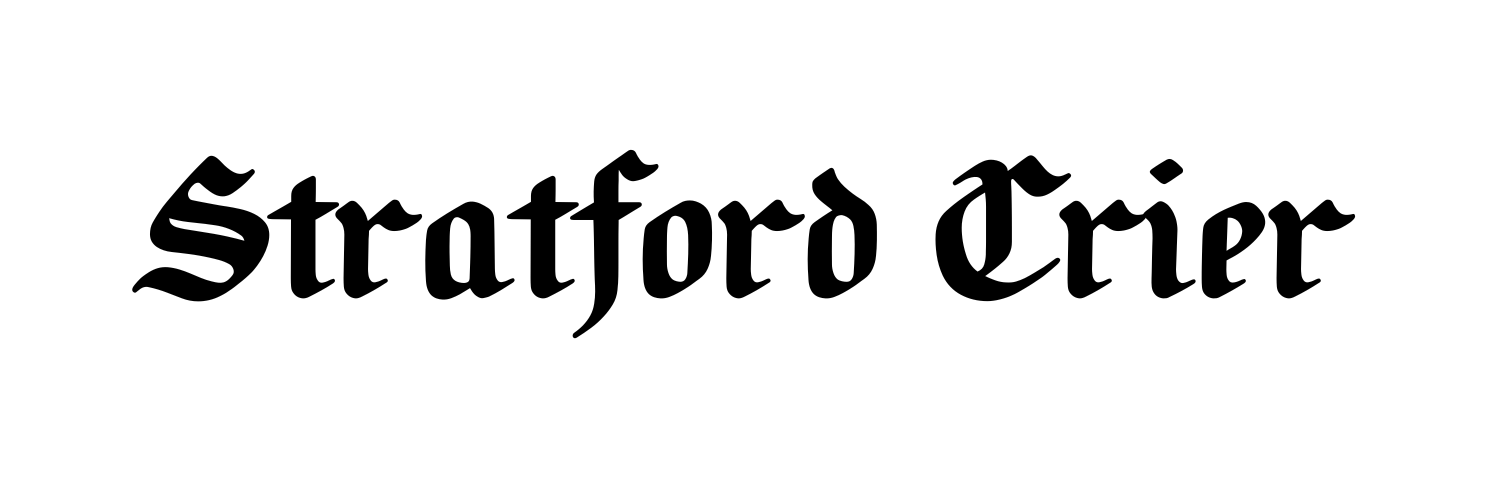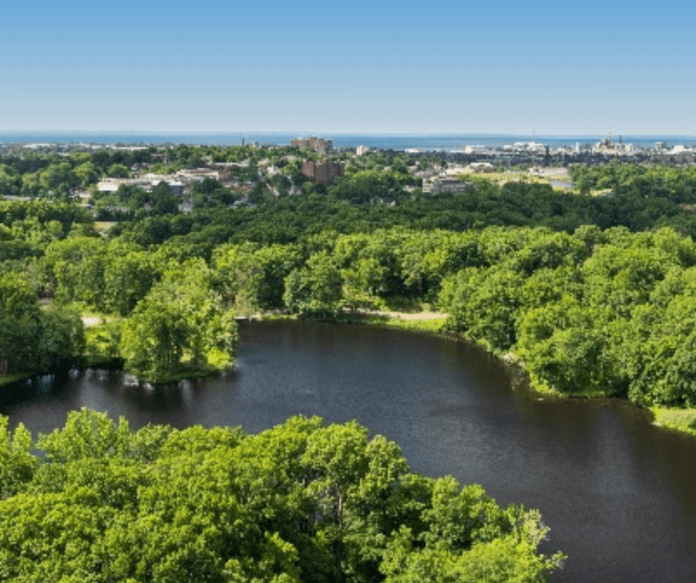Corteva Agriscience
Sporting Goods Properties
Tom Stilley, Corteva Remediation Group Leader
Tom Stilley, Corteva Remediation Group Leader, opened the update meeting at the Lake Success Business Park in Bridgeport. Four bus tours of the site were conducted prior to the start of the meeting.
Stilley’s Opening Thoughts:
- Thank you everyone for your interest in the Lake Success Business Park site and we plan to show you the significant progress we have made on our site clean-up program.
- As we approach the end of “active” remediation, we continue to ensure that the site is protective of people and the environment.
Corteva is a combination of agricultural businesses of DuPont and Dow Sporting Goods Properties, Inc. is a wholly-owned subsidiary of Corteva, and has managed the remediation program since its inception.
Definition of Terms
- AEC -Area of Environmental Concern is an area that may have had impacts from historic site operations.
- CAMU – Corrective Action Management Unit is a designated area on the site where we manage and cap our impacted soil.
- ACO-Administrative Consent Order is the legal document that forms the basis for our cleanup obligations. We have compatible ACOs with EPA and CTDEEP.
About Lake Success Business Park (LSBP)
- Located in Bridgeport and Stratford, CT.
- Total of 420 acres, 78 of which are located in Stratford.
- Former Remington Arms Company manufacturing site.
- Work is governed by two Consent orders with USEPA and CTDEEP.
- Three primary areas of focus:
- Upland soil- most site areas have been addressed and site interior roads have been remediated.
- Lake- remediation is completed, restoration work is being monitored and maintained.
- Wetlands and groundwater- sampling and investigation has been completed, and remediation plans and permit applications have been developed and are being reviewed by government agencies.
Wetland Study Areas
- All wetland areas have been mapped, along with vernal pool areas.
- Collected sediment and surface water samples at 8 different wetland locations for evaluation and compared results to ecological benchmarks.
- Collected pore water samples to determine if constituents are present in the water entrained in the sediment.
- Used data to conduct an environmental risk assessment.
Wetlands – Next Steps
- The sampling has delineated areas of concern from past site activities and built off previous sampling results.
- After evaluating the data, we have developed and submitted a Corrective Measures Implementation Plan to remediate and restore impacted wetland areas.
- We submitted the required wetlands permit applications to the U.S. Army Corps of Engineers and will be submitting permit applications to CTDEEP and the City of Bridgeport in the near future.
- Once the permits are received, sediment will be excavated and placed in the on-site future cap area.
- Remediation will occur after permits are received, possibly in the Summer or Fall of 2025.
Success Lake Remediation – Timeline
- Site preparation and equipment mobilization -August 2018 to June 2019.
- Sediment excavation from the lake -2019.
- Munitions separation and management-June 2019 to September 2022
- Restoration – Multiple phases starting in Spring 2021 and completed in October 2022.
- Maintenance and restored areas for the next 5 years:
- Normal attrition after the first planting cycle.
- Beaver damage during the winter of 2021-2022.
Success Lake Remediation – by the Numbers
- More than 92,000 cubic yards of sediment was dredged and processed.
- Over 5,000 items of munitions were recovered and managed safely.
- 74,000 cubic yards of sand and topsoil was produced for on-site beneficial re-use (sustainable).
- 24,000 cubic yards of tailing were processed and placed in the CAMU (no trucks driving through the neighborhoods).
- 6,400 ft. of shoreline was restored.
- Restoration plantings in 2021-2022:
- 25,000 aquatic plants
- 1,500 trees and shrubs
- 3,000 other plantings
- Over 80,000 hours of union craft labor.
Shoreline Restoration (Lake)
- Completed lake habitat bench.
- Littoral shelf plantings (plugs) into a gentle slope.
- Restored areas showing new growth.
Upland Grass Restoration (Lake)
- Grass seed was measured and mixed and applied through hydroseeding process.
Forest Restoration (Lake)
- Woody shrubs and trees were staged appropriately before planting.
- Former lake access ramp was restored.
- New tree plantings are protected by a deer fence.
Site Roads Remediation – Summary
- Work began in October 2022 and continued through August 2024.
- Over 4 miles of interior site roads were remediated between 2022-2024.
- Over 2,000 post-excavation samples were collected to verify the remaining soils meet regulatory standards.
- Over 6,750 dump truck loads of soil were transported on site to our cap area.
- At the completion of the project in 2024, we handled over 50,000 cubic yards of soil excavated from site roads.
- Once all excavation projects are completed, we will install a protective cap over the soil.
- We use an XRF (X-ray Fluorescence) unit to measure the amount of lead in the soil. We participate in a quality control program that measures the accuracy of our XRF machine.
Cap Area Management
- This is an area that will safely contain soil from remediated areas including:
- Roadway BrookSome lake material (debris and tailings)
- Site Roads: Several upland areas with soil that had lead and arsenic exceedances
- This is a sustainable approach that is protective while greatly reducing truck traffic and greenhouse gas generation.
South Yard Remediation
- 1.5-acre area along the southern property boundary historically used as an employee parking lot while the facility was in operation (c.1941-1989).
- Historical filling occurred in this area prior to facility operations
- Remediation will include targeted excavation with soil cap to provide 4 ft. of clean cover.
Site Groundwater
- Two areas are being studied:
- Southwest Area – near the office building and parking area.
- AEC-2 – small peninsula near the northern lake section.
- Testing in-place remedies with pilot tests at both areas.
2023 & 2024 Activities
- Enhanced In-Site Bioremediation (EISB) pilot test in October 2023 and evaluation of Monitored Natural Attenuation (MNA).
- Additional groundwater monitoring to evaluate the success will continue through the first quarter of 2025.
- MNA evaluation is currently in progress to evaluate remedy and ongoing monitoring.
- EISB Pilot Test Area:
- Treatment reduction observed following injections.
- Tetrachloroethene (PCE) concentrations have decreased 96% from October 2023 through August 2024.
- Trichloroethene (TCE) concentrations have decreased 84% from October 2023 through August 2024.
- Generation of Degradation Products
- Detections of cis-1,2 dichloroethane (cDCE), vinyl chloride (VC), ethene and ethane indicate success of pilot test.
- Concentrations of non-toxic end products (ethene and ethane) have increased 1500% from October 2023 through August 2024.
- Additional geochemical data shows that the conditions and growth media for continued biodegradation are present.
2025 Activities
- Remediation and restore wetlands.
- Cap South Yard area.
- Continue monitoring of restored areas (Roadway Brook, Lake and Wetlands).
- Continue pilot tests on groundwater study areas.
- Complete design and permitting for future cap installation.
Site Development Options
- We are at the concept planning stage, with one to two years of remediation remaining.
- Remediation schedule is subject to change based on a number of factors, including future sampling results and agency approvals.
- Public input will continue to be part of the redevelopment process.
Redevelopment Factors
- Significant conservation areas and open space.
- Preserve sensitive ecological habitats.
- The site has limited road access and has a long industrial history with munitions.
- Recognize the effect of site constraints and local real estate market on development.
Conservation Plans
- We are pursuing a plan to conserve most of the site.
- We are meeting with land trust groups and resource stewards to get input and determine their level of interest and commitment to our plan.
- We are meeting with state, local and federal officials to gain input on our plan.
- By starting conversations now, we will be ready to move forward once the active remediation is completed in late 2025 or mid-2026.
- Land use plan –
- Conservation Area – 358 acres
- Renewable Energy Area – 61 acres or less
- 70% of the property would be open space (about 300 acres)
- Possible walking trails, educational learning areas with signage and controlled access around the lake.
- Renewable energy-
- Battery storage facility
- Solar panels on capped areas
- Requires limited acreage and generates sufficient revenue to cover future site management costs.
Site Disposition Goals
- Corteva’s disposition objective is to transfer fee title of the property.
- Expected completion date for remediation is early 2026. Groundwater monitoring and restoration monitoring will continue into the future.
- Steward to be responsible for property management and maintenance.
- State of Connecticut possible ownership/management with conservation steward.
- Continue to explore limited-acreage lease opportunity with renewable energy developer to fund property management and maintenance.
Please visit our new website www.LakeSuccess.net for more information and updates.

